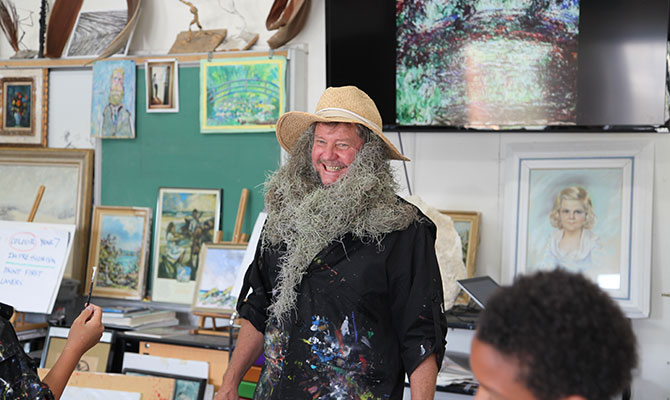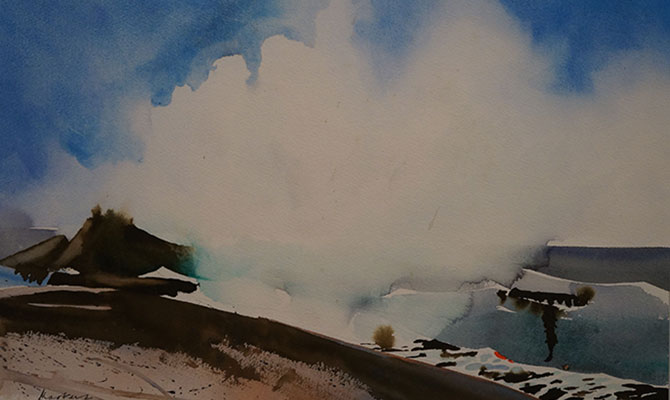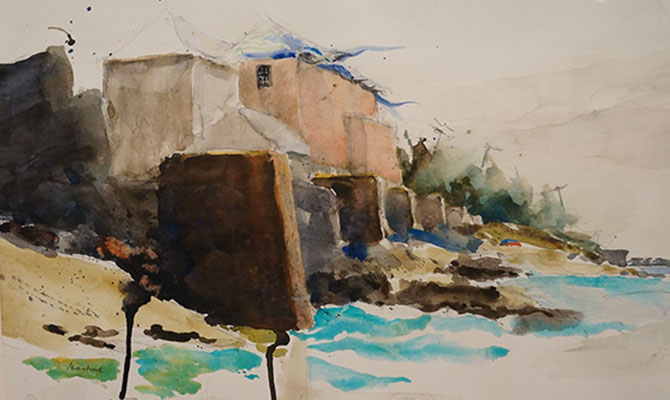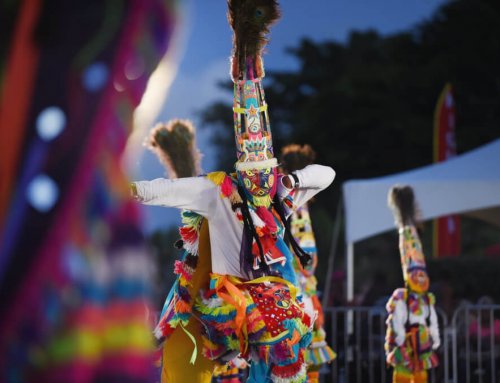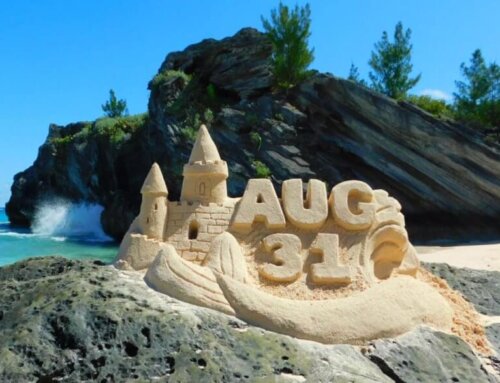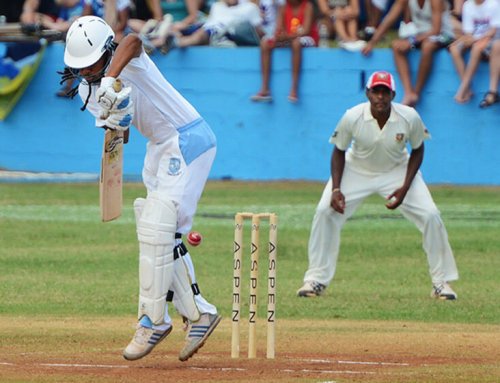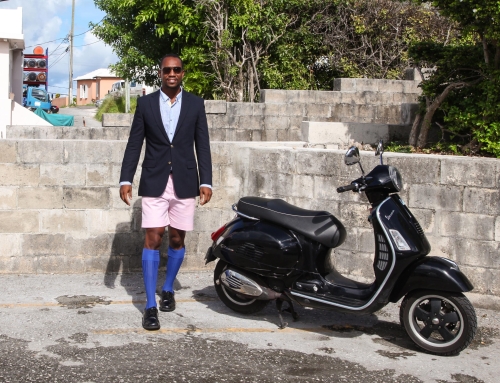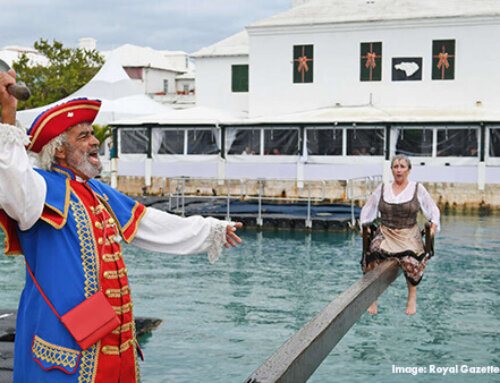By Nadia Hall
“Studies have shown that children like to learn from other children,” Steven Masters whispers, just out of earshot of his buzzing 8th grade classroom. “I love it when they give each other opinions. Professional opinions.” He wears a paint-splattered coat with a greying beard fashioned out of Spanish moss. An old, misshapen hat holds it all in place while he, or, rather, Claude Monet, explains Impressionism to a room of 12 year olds. Even in his role as a teacher, it’s clear that Masters has a passion for learning.
Since his watercolours first captivated me at the Masterworks Museum of Bermuda Art, I’ve discovered in him an interminable scope for experimentation. The painting I’m referring to portrays a man, “Diver” Bascombe, in impressive detail, sifting at the bottom of a limekiln. He has documented a now extinct process that is so intrinsic to the island’s architectural landscape. Bermuda, too, is such an inherent part of who he is, not solely as an artist. With family ties that reach back more than two hundred years, his love of old Bermuda earned him a National Trust Award for restoration of his then home on Shinbone Alley in the historic St. George’s, a subject of many of his paintings.
In Marking Territory: A Focus on Bermuda’s Landscape, his contributions appear to be a departure from that documentary-like precision. The paint collides and melts, dripping down the paper in one. Large white areas are occupied by seeming nothingness in another, like a void that speaks louder of the moment when it was captured than it might were it filled in. “I think what I do is far less deliberate,” he tells me, “and that’s why you’ll see different things because I’m still just experimenting.” As we wander the gallery space discussing the works, one word he uses strikes me in particular, “handwriting.”
“It is a handwriting because as we follow into communicating something that we see or feel we have our own handwriting,” he explains. “I can actually write fairly well, but when I’m tired it goes all over the place. The same is true when you paint. If you’re tired or hot or if it’s humid, things change, so the handwriting changes and that’s kind of beautiful.” He has a wonderful way of articulating the arcane and intangible. It is perhaps this talent that urges him to convey those external, fleeting influences. “What’s less expected of artists in Bermuda are all those subtle greys,” he draws out the word greys, almost purring. It’s true. These landscapes are a refreshing change from the typically sunny shorelines we’re used to seeing. Clarifying, he continues, “When I say grey, I mean green greys, pink greys, brown greys, aaall the greys. And that’s a time when most Bermudians really can feel the painting.”
Just like the sudden change of weather characteristic to the island, he slips effortlessly between the two roles, that of Steven the artist and Mr. Masters the teacher, waxing poetic about his favourite colour combinations and the more matter-of-fact science behind it. “If you challenged me to only use two tubes of paint, I would choose brown and blue,” he reveals, “because then I’ve got all my greys.” He shows me an example of this, a painting that is all cool blues, burnt oranges and that beloved grey, and I swear I would not have even missed the other hues had he not pointed it out.
The appreciation for times gone by is apparent in much of his work, from his documenting Mr. Bascombe to the Stonehenge-like ruins he’s captured at Castle Islands. “They’re remnants of something that happened important,” he acknowledges. Speaking to Steven is a history lesson that can quickly turn into a lecture on meteorology and then move, without pause, to something much deeper than that. A meditation on what it means to be deeply connected to a place, perhaps. “There’s something to do with those subtleties. It’s like, do you know the smell of a church worm?” he asks wistfully, but all too aware I’ll understand. “Those little black worms. When you were a kid you would pick them up and they’d roll up? They like the dampness. And they have that smell. It’s conveying those senses in a painting. I’m thinking about those things.” And now, so am I.
Steven Masters teaches at Saltus Grammar School and is a member of the Plein Air Festival’s group of artists in Bermuda.
Marking Territory: A Focus on Bermuda’s Landscape is currently on display at The Bermuda National Gallery located in The City Hall on Church Street, Hamilton.
For more information visit www.stevenmastersbermuda.com
and www.bermudapleinair.com
- Phone:
- Address:
- Email: stevenmastersbermuda@gmail.com

